
Joseph Paton Maclay, first Baron Maclay of Glasgow, was born on 6th September 1857 and was educated in that city before gaining his earliest experience of the shipping business by working as a clerk in several Glasgow shipping offices. His rise to eminence was not meteoric as was the case with many shipowners. He worked as an employee until aged 28 years until he had a certain amount of capital behind him and several backers including shipbuilder Alexander Stephen and marine engine builder Ebenezer Kemp. Kemp later had plans of his own for shipowning on a large scale, but lost his life while bathing at Rothesay before these plans came to fruition. Joseph Maclay started in partnership as shipowner and shipbroker with Walter McIntyre, the 25 year old son of a Glasgow iron merchant.
The financial backing enabled them to begin with six small steamers in 1885 including the new 1,294 gross ton General Gordon completed by Alexander Stephen in September of that year at a low cost due to depressed freight rates. This association between builder and owner was to last for 50 years. The 712 ton Edward Williams was purchased from Robertson & Ross of Glasgow and Ivanhoe, Nigel, Peveril and Rowena were purchased on the takeover of G. Hood & Co. of Glasgow in 1885. The new partners wisely kept to tramping and brokerage and made no attempt to run liner services.

The Glasgow United Shipping Co. Ltd. was set up in 1886 as the main owning company although many ships continued to be registered under single ship companies until after WW II. The enterprise of Joseph Maclay in particular ensured the prosperity of the company which by 1896 owned a very large fleet of 33 tramps. New Alexander Stephen built ships included Uganda of 1892, Janeta, Jeanara and Marthara Of 1894, Magdala and Oceana of 1895. Other new ships were Madura of 1894 from D. & W. Henderson and Glasgow of 1896 from T. Turnbull of Whitby. The company generally adopted an African nomenclature for its ships, owing to the owners active interest in African missions.
In July 1902 the company obtained a lucrative contract to supply coal to Algoa Bay in South Africa, while Robert P. Houston of Houston Line secured a similar contract to Cape Town. This trade until then had been one of the strongholds of the sailing ship and their loss proved a severe blow to their owners. This coal trade together with a large Mediterranean ore trade made up a large part of company business until the outbreak of WW I.
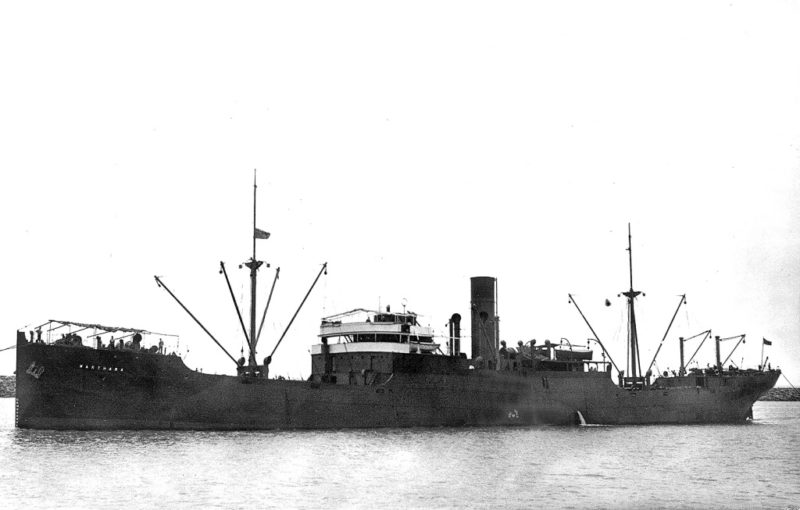
Joseph Maclay retired around 1905 after 20 years in partnership with Walter McIntyre and he devoted the next 10 years of his life to the management of his Scottish estate. His partner continued in business and made no alteration to the managing partnership name. The fleet continued to grow in strength until a very large fleet of 51 tramps were owned in 1913 ranging in size from Victoria of 1,620 gross tons built in 1887 to the new Russell built Masarua of 4,986 gross tons built in 1913. Joseph Maclay was created a Baronet in 1914 for his services to the public life of Glasgow especially the Church.

16 tramps were lost to the enemy and marine losses during WWI:
- 1.7.1915 Mascara Wrecked in White Sea o.v. Barry to Archangel
- 9.7.1915 Meadowfield Sunk by submarine gunfire 50nm SW of Tuskar
- 10.7.1915 Jeanara Wrecked at Gorodetski Pt. o.v. Cardiff to Archangel.
- 28.7.1915 Mangara Torpedoed/sunk off Aldeburgh.
- 13.8.1915 Cairo Sunk by submarine gunfire SW of Tuskar
- 19.8.1915 Samara Sunk by submarine gunfire W of Bishop Rock
- 28.2.1916 Masunda Sunk by gunfire 106nm SW of Cape Matapan
- 29.5.1917 Victoria Torpedoed/sunk NE of Scarborough
- 23.9.1917 Irthington Torpedoed/sunk near Cape Vaticano, ltaly
- 18.10.1917 Madura Torpedoed/sunk SW of Bishop Rock
- 24.11.1917 Nyassa Torpedoed/sunk off Lizard
- 3.1.1918 Mereddio Posted missing – cause unknown
- 8.3.1918 Uganda Torpedoed/sunk NE of Linosa
- 20.3.1918 Kassanga Torpedoed/sunk SE of Arklow L.V.
- 24.7.1918 Rutherglen Torpedoed/sunk SE of Port Mahon
- 29.9.1918 Nyanza Torpedoed/sunk NE of the Maidens
Operations had continued as normal during the first year of the war, but July 1915 proved to be a bad month for the company. Four ships were lost with two of these being wrecked in the White Sea in ballast, and incredibly Madura was mined in the White Sea in the same month on the 27th but managed to reach Archangel. The massive losses suffered by all shipowners pushed up second-hand tramp prices and in 1916 the company began to sell tramps. Nyassa of 1915 was sold for £180,000, Masarua of 1913 for £180,000, Angola of 1912 for £180,000 and Gowanburn of 1905 for £115,000. Thus the company finished the war with only 8 tramps.
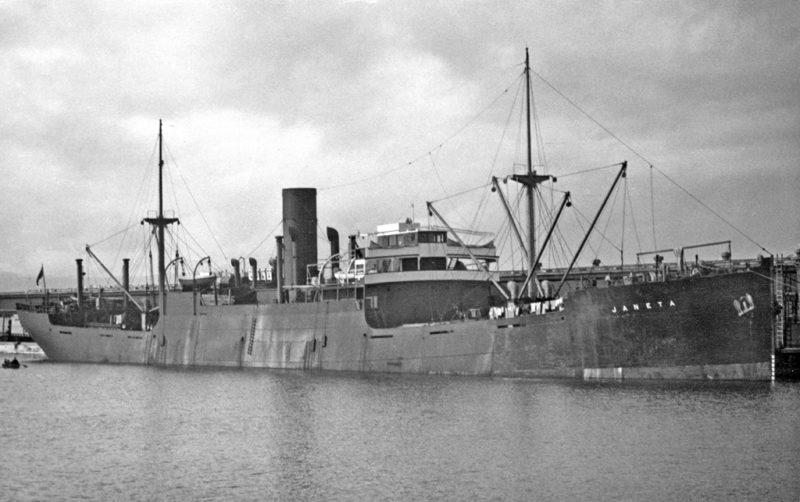
Sir Joseph Maclay was appointed in 1916 to preside over the newly constituted Ministry of Shipping. This new Government department had been formed to check and control the irresponsible and wasteful requisitioning of merchant tonnage by various Government offices. Few people outside shipping circles expected Sir Joseph to be appointed, but his intimate knowledge of tramp shipping was of extreme value to the appointment.
He was most successful and was respected for his straightforward talking, and was lated appointed a Privy Councillor and in 1918 joined the War Cabinet. It was the duty of the Ministry of Shipping to specify the type of vessels that were needed most urgently, and it is interesting to note that the ‘A’,’B’, and ‘C’ standard ships were based on the designs of company ships built for them by Alexander Stephen. After the war Sir Joseph authorised the sale of standard ships built during it, and he relinquished his position of Shipping Controller in March 1921 and received a Peerage in November 1922 for very real services to his country.
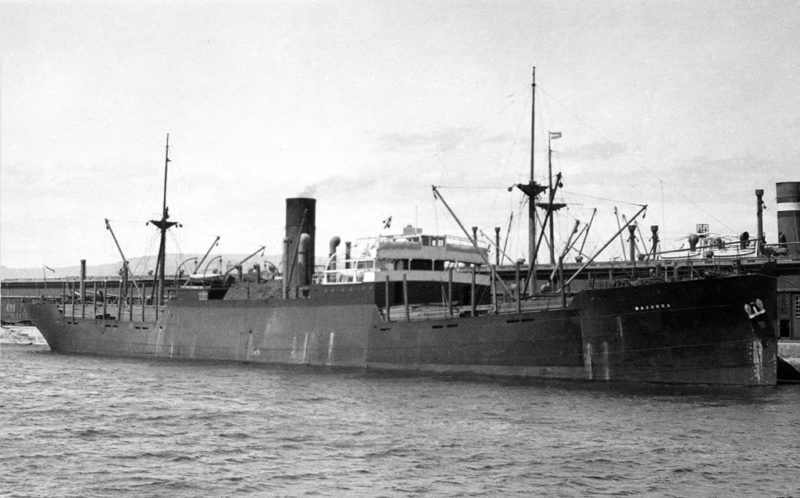
The company wisely made no attempt to build up the fleet again during the post-war boom and subsequent massive slump, but nine of varying sizes were delivered during the next 5 years:-
- Alexander Stephen & Sons Ltd. (2) Induna, Masunda
- W. Gray & Co. Ltd. (2) Domira, Ingola
- Barclay, Curle & Co. Ltd. (2) Invella, Janeta
- D.& W. Henderson (3) Marthara, Uganda, Nyanza
It had always been the policy of the company to build when prices were low, usually during a depressed period in the shipbuilding industry, and sell when prices were high. The very first tramp built for Maclay & McIntyre, General Gordon, had been built during a depression.
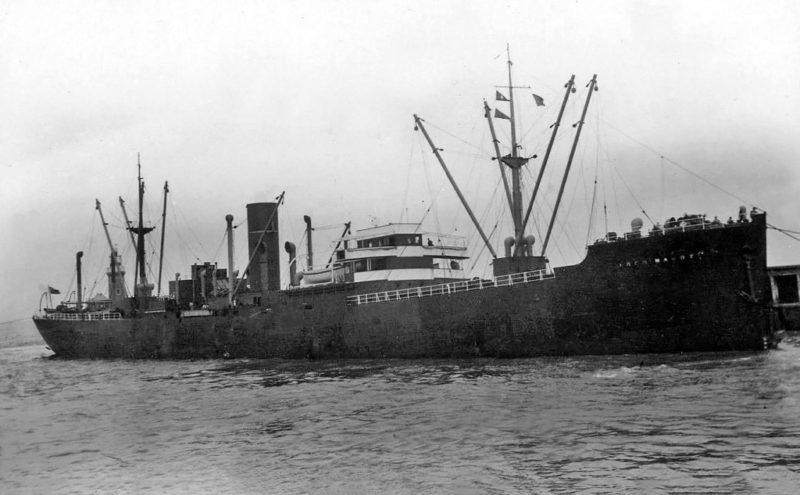

During the inter-war period the company ships were mainly employed in the long distance tramp trades, coal outwards from South Wales ports to the Plate and grain home or ballast to Cuba for sugar. Lord Maclay divided his time between his public duties which included the Clyde Trust, and the company he had founded.
When the depression of the 1930s began to bite ships had to be laid-up at the end of voyages and the old ones never got going again. Magdala of 1906 was sold for scrap and arrived at Sunderland on 2nd July 1932 and Romera of 1909 was broken up during 1934 at Rosyth by Metal Industries.
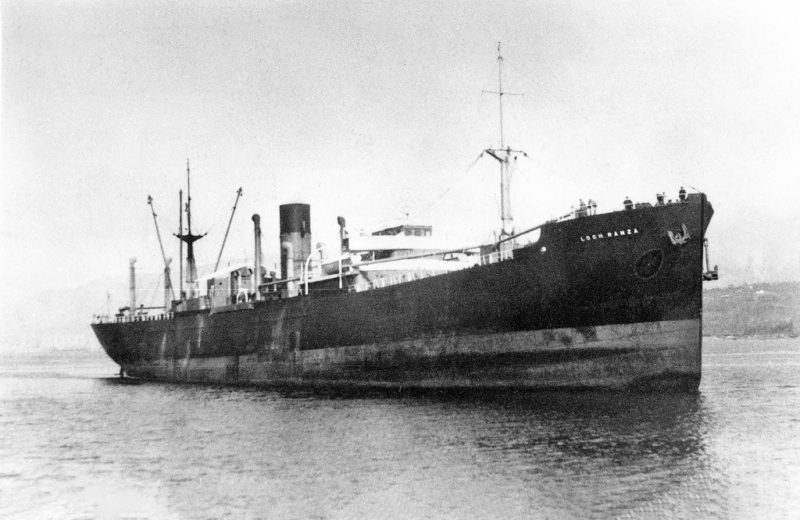
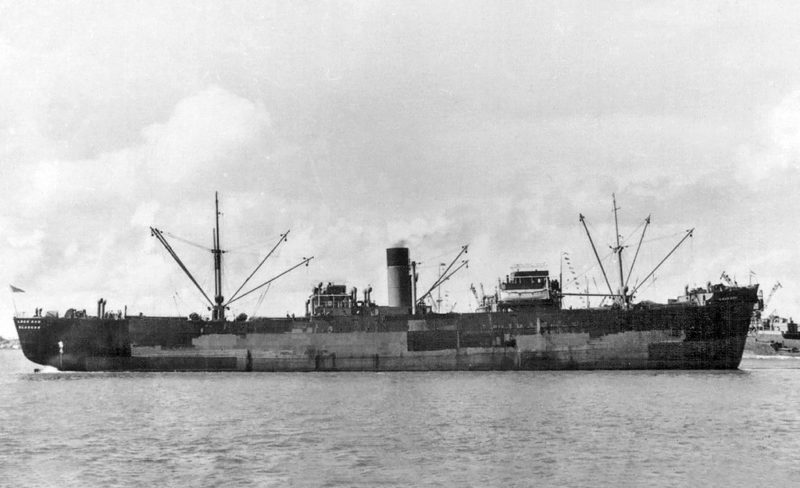
With prices of new tramps at rock bottom again now was the time to build and three new sisters of 8,000 dwt were completed during 1934 for a new company set up that year, Glasgow Navigation Co. Ltd. A new nomenclature was started with Loch Ranza, Loch Lomond and Loch Maddy from Alexander Stephen, D.& W. Henderson and Lithgows respectively. The similar Loch Dee and Loch Don were completed by J. L. Thompson & Sons Ltd. at Sunderland in 1937. The Glasgow United Steamship Co. Ltd. owned 3 tramps in 1934 and made a trading loss of £1,947 with no dividend being paid.
On the outbreak of war the fleet consisted of 12 large modern tramps, 5 ‘Lochs plus Janeta and Masunda of 1929, Nyanza of 1928, Uganda of 1927, Induna and Ingola of 1925, and Invella of 1924. The company was still operating from their original offices in Bothwell Street, Glasgow and Lord Maclay was still Chairman.
Only 5 of the pre-war fleet were to survive the onslaught, the losses being:-
- 21.2.1940 Loch Maddy Torpedoed/sunk near Copinsay LH
- 19.10.1940 Uganda Torpedoed/sunk NW of Rockall
- 20.10.1940 Loch Lomond Torpedoed/sunk SE of Rockall
- 3.2.1942 Loch Ranza Sunk by air attack off Singapore
- 30.3.1942 Induna Torpedoed/sunk NE of Murmansk
- 1.4.1942 Loch Don Torpedoed/sunk NE of Bermuda
- 1.5.1944 Janeta Torpedoed/sunk off West Africa
Uganda and Loch Lomond were both members of convoy HX79 of 49 ships which lost 13 ships in a massacre started on 19th October 1940 as they approached Rockall. Sighted by U-boat ace Prien in U47 the day after the rout of convoy SC7 the one-sided battle started by U-boats surfacing in the convoy between the columns and continued over 9 hours of darkness.
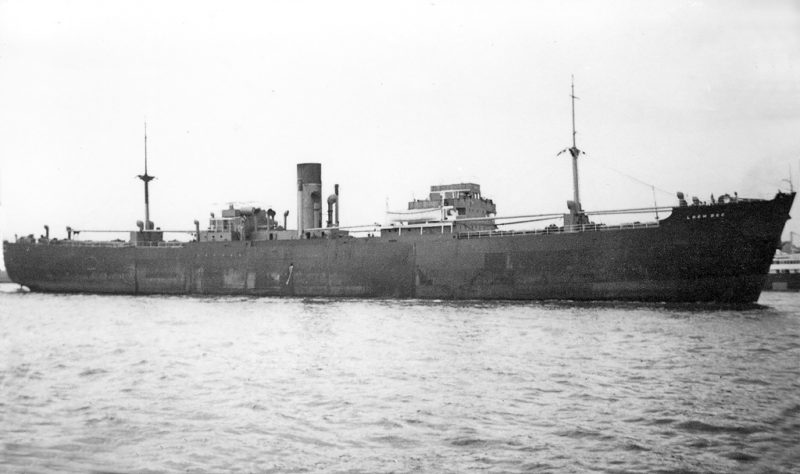
Uganda was one of the first hit and all but one of her lifeboats were destroyed when the torpedo struck home from U38. Loch Lomond was the last sunk and this was unfortunate as she was designated as Convoy Rescue Ship and had onboard all the survivors from the other 12 ships which had been pulled out of the sea during the night. Fortunately all survivors plus her own crew were rescued by an escort.
Loch Ranza was torpedoed and damaged in HX90 on 1st December 1940 by U101 three days from safety but was fortunately towed in. She was later bombed and sunk on 3rd February 1942 while fleeing Singapore for Batavia after discharging her cargo. She was carrying four R.A.F. personnel who survived the subsequent fire, but six crew and one gunner had died in the inferno. She was beached and later blown apart by internal explosions.
Thirty one of the forty crew and ten gunners on Induna suffered the equally horrible fate of being frozen to death a month later on 30th March. They had sailed in PQ13 for Murmansk from Iceland on the 20th but by the 27th the convoy was scattered over 150 miles by a violent storm. Induna was easily picked off by U376 shortly after she had stopped towing an armed trawler when the towline had parted. The crew got off in two lifeboats, one containing 32 and the other containing 18 persons. Most froze to death in the first two nights but land was sighted on the fourth night and 21 brave survivors were picked up by Russian aircraft and minesweepers and taken to hospital where two more died.
Ingola had been sold in 1940 and survived the war as Tenax, and the company survivors were Invella, Nyanza, Masunda and Loch Dee. After the war the business was rebuilt again with the board of directors substantially the same as pre-war together with Marine Supt. Binnie who had been with the company for nearly 50 years. Invella was sold to Greece in 1947, Nyanza to Germany in 1950 and Masunda to Japan in 1952, ironically since these last two countries had successfully wiped out their fleetmates. Two standard Empire types were purchased as replacements in 1951 and renamed Loch Ranza and Loch Maddy.
In April 1951 the first Lord Maclay died in his 94th year. His son, Joseph Paton Maclay, succeeded him to the title and was elected Chairman.
The board was then as follows, Lord Maclay, Hon. J. S. Maclay, J. A. Nimmo and W. G. Murray with J. Thompson as Marine Superintendent. The company had meanwhile moved offices from Bothwell Street to 125, Buchanan Street and shortly afterwards Hon. J. S. Maclay left the board to take up a political career.
The pre-war Loch Dee was then sold off and replaced in 1955 by two more ‘Empire’ types which were renamed Loch Don and Loch Morar. The four ‘Empires’ could not compete after the downturn in freight rates starting in the middle of 1957, and Loch Don and Loch Morar were sold in 1959.
The last pair, Loch Ranza and Loch Maddy, were sold in 1960 after being laid-up for over 18 months.
A sad end for another British tramp company after 75 years trading.

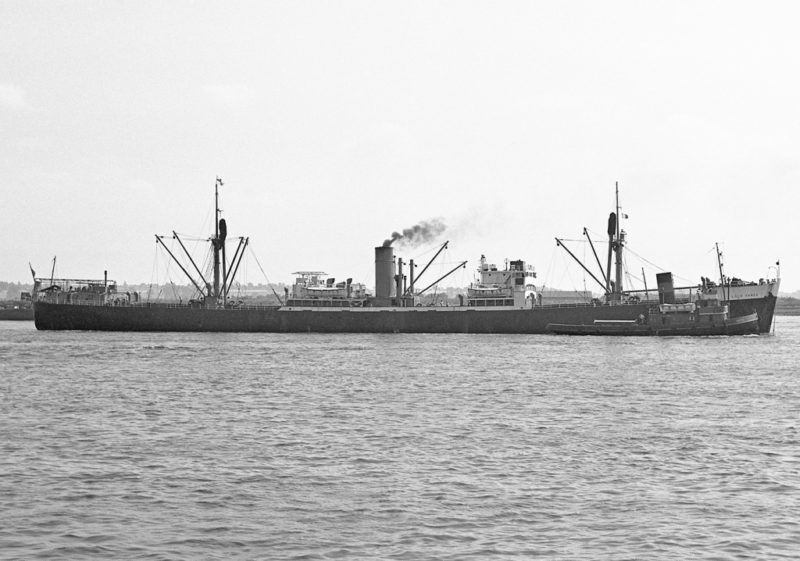
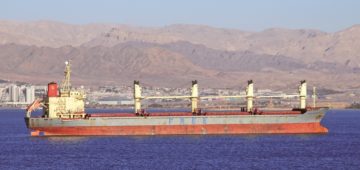



Comments
Sorry, comments are closed for this item